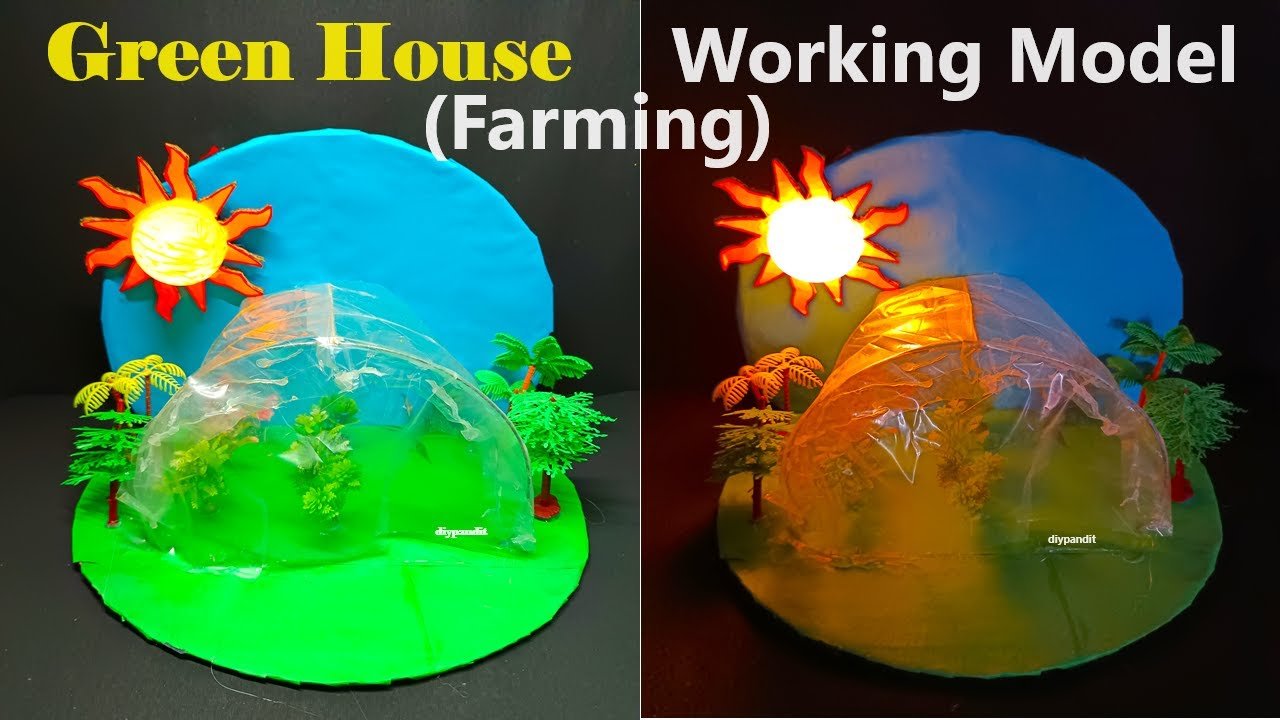Creating a working model of a greenhouse farming system with a plastic cover, LED lights, and artificial plants is a great way to demonstrate the concept of controlled environment agriculture.

Here’s how you can make it:
Materials Needed:
- Cardboard or plywood (for the base)
- Clear plastic sheeting or transparent plastic container (for the greenhouse cover)
- Small LED lights (white or full-spectrum)
- Artificial plants or small potted plants
- Small pots or containers for plants
- Soil or potting mix
- Watering can or spray bottle
- Markers or colored paper (for decoration)
- Scissors or utility knife
- Hot glue gun or strong adhesive
Steps by Steps Video Instructions greenhouse farming:
1. Prepare the Base:
- Cut out a piece of cardboard or plywood to serve as the base of your greenhouse model.
- Ensure the base is large enough to accommodate the greenhouse structure and plant pots.
2. Build the Greenhouse Structure:
- Create the frame of the greenhouse using cardboard or small sticks.
- Cut four equal-sized pieces for the sides and two longer pieces for the roof.
- Assemble the pieces to form a rectangular shape, leaving one side open for access.
3. Cover with Plastic:
- Cut a piece of clear plastic sheeting or use a transparent plastic container to cover the frame.
- Attach the plastic to the frame using hot glue or strong adhesive.
- Leave the front side open to access the interior of the greenhouse.
4. Add LED Lights:
- Attach small LED lights to the interior sides of the greenhouse using hot glue or tape.
- Ensure the lights are evenly distributed to provide uniform illumination.
5. Plant Artificial Plants:
- Place small pots or containers inside the greenhouse.
- Fill the pots with soil or potting mix.
- Plant artificial plants or place small potted plants inside the pots.
- Arrange the plants to create a realistic and visually appealing environment.
6. Decorate the Base:
- Decorate the base of the greenhouse with markers, colored paper, or other materials.
- Create pathways, garden beds, or other features to enhance the visual appeal.
7. Test Your Greenhouse:
- Place the greenhouse in a well-lit area.
- Turn on the LED lights to simulate sunlight.
- Observe how the plants react to the light and environment inside the greenhouse.
- Water the plants as needed to maintain moisture levels.
Explanation:
- The model greenhouse simulates a controlled environment where plants can grow under optimal conditions.
- The clear plastic cover allows sunlight to enter while trapping heat and moisture, creating a warm and humid environment.
- The LED lights provide supplemental light to ensure the plants receive enough energy for photosynthesis.
- Artificial plants or small potted plants demonstrate how different crops can be grown in a greenhouse environment.

